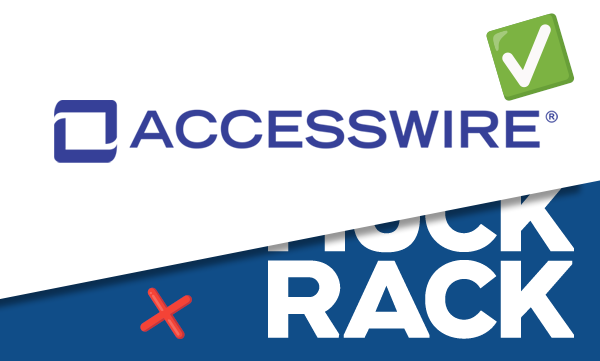How to Develop a Successful Public Relations Strategy
Ask yourself: what motivated you to build your brand? What did you hope it would become at its highest iteration?
While the quarterly goals of your company may change, its enduring vision is what sets you apart from competitors. Public relations is how you express that vision, and an effective PR strategy is what blazes the trail towards its actualization.
In this article, we’ll break down what it takes to build a dynamic, successful, and sustainable PR plan and how to implement it so you can achieve effective press release distribution to meet your PR goals.
The Birth of Modern Public Relations
An embryonic version of today’s public relations industry took root amid the explosive advances in communications technology of the 20th century. Public and private sectors were suddenly equipped with the ability to talk to their audiences—and for audiences to talk back.
Public relations was endowed with the puzzle of engaging an increasingly media-literate public and became an essential arm of any vital, relevant business. PR activity was responsible for:
- Harmonizing with the current culture
- Persuading their audiences rhetorically
- Building relationships actively with the consumer public, investors, and peer organizations (e.g. regulatory agencies, the government, print media, etc.)
If the 20th century made PR a two-way street, then the 21st turned it into a rush-hour freeway.
The advent of the internet made for a PR culture that was less about taking the cultural temperature than forecasting it, less about persuasion than conveying trust and transparency to a savvy, media-aware public.
The third responsibility of fomenting relationships remains at the heart of digital era public relations. Today, the Public Relations Society of America defines the field as “a strategic communication process that builds mutually beneficial relationships between organizations and their publics.” 1
Prep Step: Know What Public Relations Is—and Isn’t
To formulate an appropriate PR strategy, it’s essential to first define what does and does not fall in the domain of public relations.
#1 Public Relations is a Science
Despite their social reputation, relationships are measurable bonds that can be assessed with all sorts of metrics—that includes relationships to individuals, as well as constituencies.
Around the 1950s, both public relations and advertising began heavily investing in consumer research to understand how to better reach, jibe with, and anticipate the wants of the public. This research-based approach remains an essential element of private sector growth, with companies like ACCESSWIRE providing data analysis and interpretation for quantifiable results.
#2 Public Relations is not Advertising
There’s an old PR adage that says, “Advertising is what you pay for, publicity is what you pray for.
”While advertising and public relations work in tandem, they perform distinct functions for a company or brand. Where advertising seeks to portray your brand with paid spots in media coverage, public relations augments brand visibility holistically and serves to interpret your message in the public sphere."
#3 What Public Relations Does
The Public Relations Society of America cites the following activities as central to modern PR 2:
- Brand journalism
- Corporate communications
- Crisis management
- Generating online content & media
- Internal communications
- Investor communications
- Integrated marketing plan & communications
- Media relations
- Events planning
- Social media management
- Speech writing
With so many functions and a near-infinite terrain (read: the internet) in which to disseminate your message, it’s imperative to have a considered, measurable, time-bound, and goal-oriented public relations strategy in place.
Why Is Having a Public Relations Strategy Important?
Crafting a PR plan is important for advancing your brand awareness and brand mentions in the long run, and for having the tools to measure its progress.
Further, devising an agenda with your chief public relations strategies and tactics will help you create a clear, consistent, and relevant brand identity. From there, you can focus on how to write a press release that is effective and resonates with your audience.
Modern consumers are smarter at sensing and navigating advertisements than ever before, and to reach them, you need to speak their language to build trust. Remember, you are building a relationship with your public—and all relationships require work.
Your PR strategy is where that work starts.
Step 1: Identify Your Brand’s Desired Outcome
The first step in articulating your PR strategy is to envision a lucid and specific picture of your desired outcome. In other words, how do you want your brand to interact with your target audience?
Here are a few questions to start the brainstorming:
- What are you trying to achieve? – It’s probable that you have many objectives in play simultaneously. Itemize them, but also be sure to include the vision that inspired you to build your brand in the first place. Part of PR’s role is to ensure brand comprehensiveness: that the smaller pieces function in service of the big picture.
- When do you want to achieve it? – List any concrete dates, deadlines, or events integral to your in-progress initiatives. If there are future projects you want to pursue, sketch the timelines for those as well.
- Who are your stakeholders? – Stakeholders include your audience, employees, investors, and any suppliers. All of these parties can affect how your product, and your brand, are publicly received.
- What are you trying to get across? – We’ve already covered how modern PR interacts with a culture that communicates laterally, rather than from the top down. Yes, your brand has a key message it’s trying to convey—it’s also trying to start a conversation. Ask yourself what kind of buzz you want to kindle among your stakeholders
Step 2: Research
Today, most research is performed through analyzing data rigged from the internet—data that relates to both the client (your brand) and their publics.
There are a host of techniques researchers use to gain insight into your target audience and how they receive you. These include:
- Detecting mentions and feedback about your company shared on social media
- Making search engine alerts for your company and relevant products
- Aggregating and analyzing any press related to your company and/or product to ascertain messaging and tone
- Interpreting data, statistics, and facts found during research to enhance existing relationships and identify untapped publics
Research Your Audience
There are innumerable ways you could tell the story of your brand, but only so many can persuade an audience to invest in it. Your research will yield how you’ve communicated your identity thus far, where you need to make amendments, and how to translate your image to your public persuasively, and with integrity.
Research Your Brand
Understanding your brand identity in the eyes of your audience extends from sheer awareness of your brand to the interactions your audience has with your brand.
Prioritizing research, data collection, and analysis will give you a sense of where you’re working from and minimize the time, work, and expense of adapting your brand identity later down the line.
Your research may illustrate that some of these are points of strength, where others may need strengthening. In the next phase of developing a successful PR campaign, we’ll cover a targeted method for tightening up the bolts through setting measurable, precise, time-bound goals.
Step 3: Set Goals
There is no need to sacrifice your ambition to make manageable, plausible goals for your company's growth. To establish your PR objective, it’s important to know how success in managing your public image can be measured. PR measurement will be integral to analyzing your growth and setting achievable goals.
Types of PR Actions
Public relations engagement falls into three main categories, including:
- Traditional and non-traditional media coverage directly yielded by public relations initiatives like press releases, events, Instagram posts, etc.
- The effect of media mentions on public opinion, attitudes, conceptions, behaviors, and preferences as they relate to your brand.
- How the combination of these contribute to or detract from your brand’s objectives.
When setting goals, be sure to include each of these arenas in your list of objectives. Each goal should adhere to a longer timeline, and, ideally, be broken down into a plausible schedule.
Step 4: Assess Progress
Public relations is a long-term enterprise, one that will inevitably have to adapt and shift with a growing audience. Successes and shortcomings should be monitored and adjusted on a recurrent basis with the metrics appropriate to your brand.
How PR Actions are Measured
There are countless ways to measure your relationship with your public. Some popular metrics include:
- Number of brand mentions
- Reach and circulation
- Tone of coverage
- Salience of coverage
- Third-party endorsements
- Sales revenue
- Employee retention
After you’ve determined what metrics you’ll use, define a timeline for their completion. Where possible, use specific measurements and dates to work toward and break them down into smaller time frames.
Remember that strategic public relations, as the PRSA stated, is a process—when in doubt, always return to the original desired outcome you established. Changing course, revising strategies, and making amendments are signs you’re headed in the right direction because you’re actively listening, adapting, and in conversation with your audience.
Gain Traction and Grow your Brand with ACCESSWIRE
Particularly in the digital world, a streamlined PR professional management and social strategy is a non-negotiable for ensuring your brand has the relevance, endurance, and edge to stay visible. For more information on press release services, visit ACCESSWIRE. Here, we will assist with common techniques including, how to distribute a press release and the best press release SEO practices.
ACCESSWIRE is a newswire service that gets you noticed, producing press and content to audiences regionally, nationally, and around the world. We work with you to start incisive conversations and tell better stories. We’ll drive up your following across and between platforms, transforming your brand identity and garnering new audiences along the way.
Sources:
The Public Relations Society of America, Inc. About Public Relations
HuffPost. How to Develop a Successful PR Strategy
Similar Blog Posts



PRODUCTS
ACCESSWIRE | All Rights Reserved

